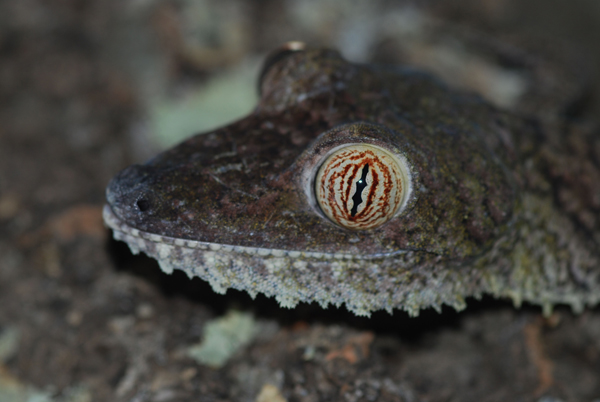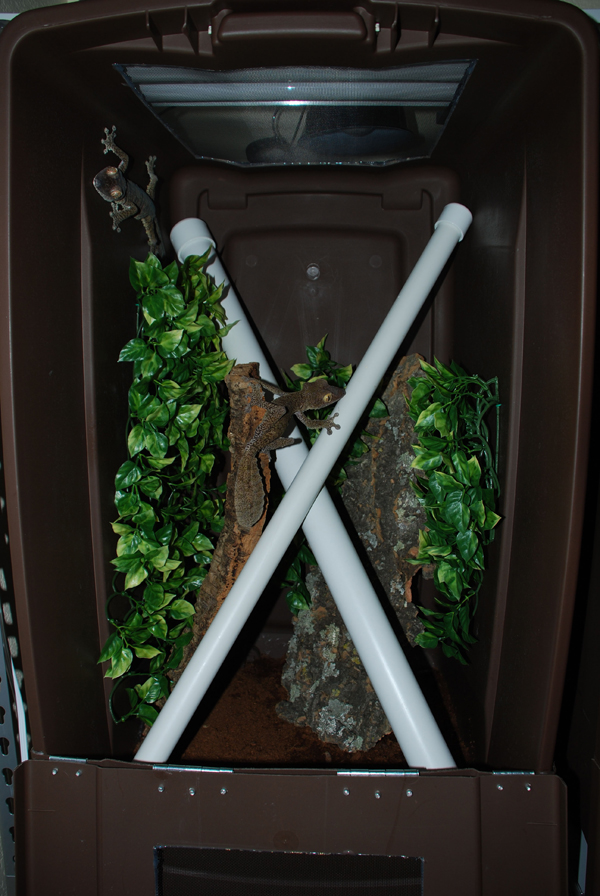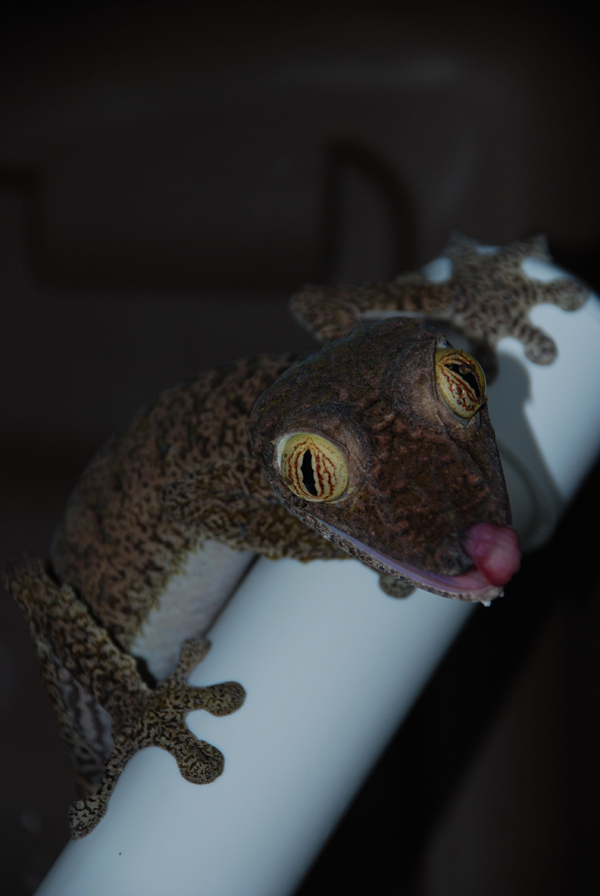Updated February 3, 2023 The giant leaf-tailed gecko is native to Madagascar, where it inhabits rain forest habitat along the eastern coast. It has
Updated February 3, 2023
The giant leaf-tailed gecko is native to Madagascar, where it inhabits rain forest habitat along the eastern coast. It has a relatively flattened body; a large, angular head with large eyes and vertical pupils; and very muscular legs it uses to jump from tree to tree. The fringed body – the lizard is also known as the fringed leaf-tailed gecko – may exhibit a variety of colors, from dark brown to light gray, and the tail is wide and flat, resembling a leaf and providing the gecko with its common name. While it is a magnificent gecko, it is not recommended for novice keepers.
Read More
Satanic Leaf-Tailed Gecko Care Sheet
Breeding The Giant Leaf-tailed Gecko
Which Gecko Species Is Right For You?
Giant Leaf-Tailed Gecko Availability
Most Uroplatus fimbriatus available for sale are wild-caught specimens, with captive-bred specimens rarely available. The best place to acquire one would be through a reputable breeder that specializes in captive-bred animals. There might be a waiting list for a captive-bred giant leaf-tail, but the wait would be worth it. With this care sheet, we hope to offer husbandry and reptile supply recommendations.

Erik Strait
Uroplatus fimbriatus are nocturnal.
Giant Leaf-Tailed Gecko Size
Adult giant leaf-tailed geckos range in size from 10 to 12 inches. Hatchlings measure about 2 to 2 1/2 inches upon hatching and grow very quickly!
Giant Leaf-Tailed Gecko Lifespan
Wild-caught specimens tend to average two to five years in captivity, whereas captive-bred animals tend to live between seven and 10 years.
Giant Leaf-Tailed Gecko Caging
A vertically oriented enclosure with an acrylic rear wall and sides, and a screen front and top, works well for giant leaf-tails. This helps keep humidity in, and the acrylic walls, upon misting, allow the formation of water droplets the geckos will drink.

erik strait
PVC pipe provides for a good perch for the giant leaf -tailed gecko.
Hatchlings and juveniles measuring up to 6 inches in length can be kept in enclosures measuring approximately 12 inches long, 12 inches wide and 18 inches tall. Single adults and pairs can be housed in cages that are 18 inches long, 18 inches wide and 36 inches tall. Trios can be kept in enclosures measuring 24 inches long, 24 inches wide and 48 inches tall. The bigger the enclosure, the better, as long as the geckos can find their food easily. Sexually mature males should not be housed together because they will fight.
As for lizard habitat products, provide perches (PVC can be used for ease of cleaning), natural branches, cork bark, etc., as well as plants. Artificial plants with large leaves can be used with Uroplatus. When misted, leaves provide a good place for water droplets for the geckos to drink. You can use a reptile mister to facilitate this.
Lizard Heating & Lighting
Giant leaf-tails do well with an ambient air temperature of about 75 degrees Fahrenheit using whatever type of heating device best suits your needs. A reptile bulb at the top of the enclosure resulting in a basking site of about 80 to 82 degrees should be provided, as well. Night-time temperatures can be dropped to the mid to high-60s. Use a reptile thermometer to monitor this.
Uroplatus are considered to be crepuscular. They are a Zone 1 reptile under the Ferguson Zones for UVB (Crepuscular or shade dweller) and their enclosure should be outfitted with a UVB light that is in the Zone range UVI 0 – 0.7 with a maximum UVI of 0.6 – 1.4 in the basking zone.
Giant Leaf-Tailed Gecko Substrate
Hatchlings can be housed on paper towels to reduce the risk of impaction resulting from the accidental ingestion of substrate. Multiple layers to create some cushion may prevent injuries because Uroplatus are enthusiastic feeders that may otherwise injure their snouts while pouncing at prey items on the floor of the enclosure. Juveniles and adults can be kept on a peat moss/soil/coco-fiber mixture, or coco-fiber alone.
Giant Leaf-Tailed Gecko Food
A varied diet is crucial for giant leaf-tails to thrive. Offer a variety of live reptile food, including different types of roaches, crickets, super worms and wax worms. Place worms on a plate or jar lid so they don’t burrow into the substrate. During breeding season consider giving breeding females pinky mice.

erik strait
Mist your giant leaf-tailed gecko at night to ensure water droplets are available for them to drink.
Giant Leaf-Tailed Gecko Water and Humidity
Given the tendency of Uroplatus to dehydrate in captivity, misting and humidity is vital to their survival and breeding success. They rarely drink out of a standing water bowl, but provide one just in case. Mist them at night, ensuring water droplets are plentiful on cage decorations and the solid walls of the enclosure. The leaf-tails will drink these droplets, and the moisture resulting from misting will raise the humidity, too.
Giant Leaf-Tailed Gecko Handling and Temperament
Wild-caught leaf-tails can be very jumpy and should not be handled unless necessary. Captive-bred specimens tolerate handling better than wild-caught geckos, but they should still not be handled unless necessary. Otherwise they may be likely to jump or bite, as Uroplatus fimbriatus will bite when provoked.


